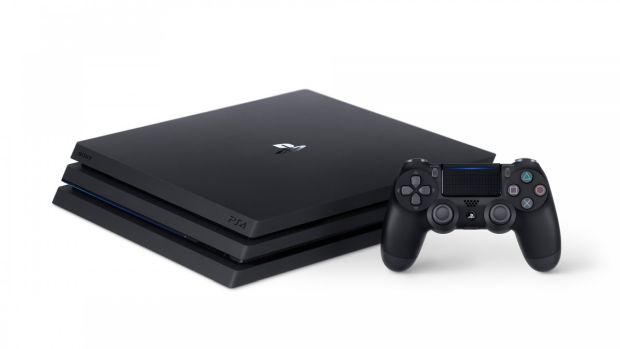
While the console manufacturers are somewhat averse to calling them that, the PS4 Pro and Xbox Scorpio represent the closest thing we’re likely to get to a ninth console generation (Switch notwithstanding). With a new generation comes new hardware, and while it was initially assumed that the PS4 Pro features relatively unaltered off-the-shelf hardware, it appears as though Sony’s new platform has a few hardware tricks up its sleeve.
Eurogamer’s Digital Foundry recently conducted an excellent and an in-depth interview with PS4 Pro’s system architect Mark Cerny. We strongly recommend checking that interview out. During the course of the interview, Cerny revealed a few interesting tid bits and enhancements about the PS4 Pro that we are going to tackle at an in-depth level through this article. Note that this is part 1 of this feature so check us out again later this week for the second and final part.
Polaris and Massive Efficiency Gains
The shift to AMD’s new Polaris architecture, and the move to the 14nm fab process entail substantial efficiency gains, both from a thermal and power consumption perspective, right off the bat. While AMD claims that architecture gains in GCN 4.0 have contributed to 15 percent efficiency gains clock for clock, our experience with desktop Polaris and earlier hardware including the 390X, 380X, and Fury indicates that under DX11 workloads, GCN 4.0 is only marginally more efficient than GCN 1.2/1.3. What is far more significant, in the desktop space at least, is that the shift to the 14nm process has allowed AMD to substantially ramp up clock speeds with Polaris, as well as drastically increasing the number of CUs in a given amount of die space.
What this means for the PS4 Pro is a moderately increased GPU clock, along with a substantially meatier 32 CU GPU, all without substantially higher power requirements than the original PS4. In order to hit higher resolutions, the PS4 Pro has to feature a substantially more powerful graphics component. Thanks to the 14nm fab process, AMD was able to cram twice as many CUs onto a die area that’s only marginally larger than Pitcairn. Die size, of course, scales with cost, and this is the main reason why Sony is able to make PS4 Pro levels of graphics power available at a $399 price point.
Delta Color Compression and 16-bit Half Float
The PS4 Pro is positioned as a “4K console.” While gameplay for confirmed titles indicates that the Pro won’t hand in a native 4K output in most AAA modern games, it most certainly will be rendering most titles at resolutions higher than 1080p. Memory bandwidth scales with framebuffer resolution, and a bottleneck here will pose a significant challenge if you’re looking to run games at higher resolutions. The original PS4 didn’t exactly ship with a surfeit of bandwidth, at 186 GB/S, and the PS4 Pro only features a modest bump in bandwidth to 218 GB/S, which is pedestrian compared to cards like the 390X—at 384 GB/S—targeting higher resolutions.
What’s the solution here? As always, the Polaris answer is “more for less.” The next-generation delta colour compression tech onboard the PS4 Pro’s GPU is 30 percent more efficient colour compression on the 290X/390X. Colour compression reduces the size of the framebuffer, thereby reducing actual memory bandwidth needs. With 30 percent more efficient colour compression, the Pro’s GPU has an effective bandwidth of 283 GB/S as compared to the 390X. Because the Pro doesn’t offer that much bandwidth as is, color compression and reduced bandwidth requirements will enable it to hit playable framerates at higher resolutions—which is the whole point of the Pro in the first place.
On the other hand, the “more with less” approach sees potential gains in shading performance thanks to better support of 16 bit half-float variables. With the PS4 Pro, half-float variables take up half the register space as a full-float variable. While less precise and not applicable in all scenarios, this does offer develops the possibility to further optimize performance for games on the Pro, especially later down the line when (we’re hoping) Pro exclusives will begin to crop up and compatibility with the original PS4 is no longer such a concern.
Extra DDR3: Freeing Up More Dedicated Video Memory
The PS4 featured 8 GB of GDDR5 memory. While this was drastically more video memory than the PS3 had, it wasn’t dedicated to the GPU, meaning that, in effect, the GPU only had around 3-4 GB of VRAM on tap. At lower resolutions, this is still plenty, but beyond 1080p, high-resolution textures become a substantial problem. With the PS4 Pro, Sony opted not to increase the amount of GDDR5 memory onboard. This, unfortunately, has meant that textures in PS4 Pro games are largely unchanged from the PS4, with the lower resolution assets making for a somewhat painful viewing experience at 4K. Although additional GDDR5 would’ve been welcome, this would have likely increased costs.
What’s Sony’s solution? The PS4 Pro gets an additional 1 GB of slower DDR3 RAM. This will not be utilized by games per se. Rather, OS functionality like multitasking will be moved over to DDR3, which reduces system overhead on the shared GDDR5 pool. This allows developers to make use of an additional 512 MB of GDDR5 RAM for games. While it might not be enough to deliver high-res textures at 4K, it is a step in the right direction. While it’s possible that existing titles won’t get a texture resolution bump on the Pro, the additional DDR3 indicates that developers could eke out higher resolution textures on the Pro if they can manage space effectively.















